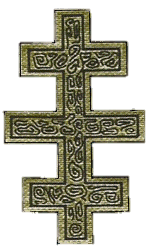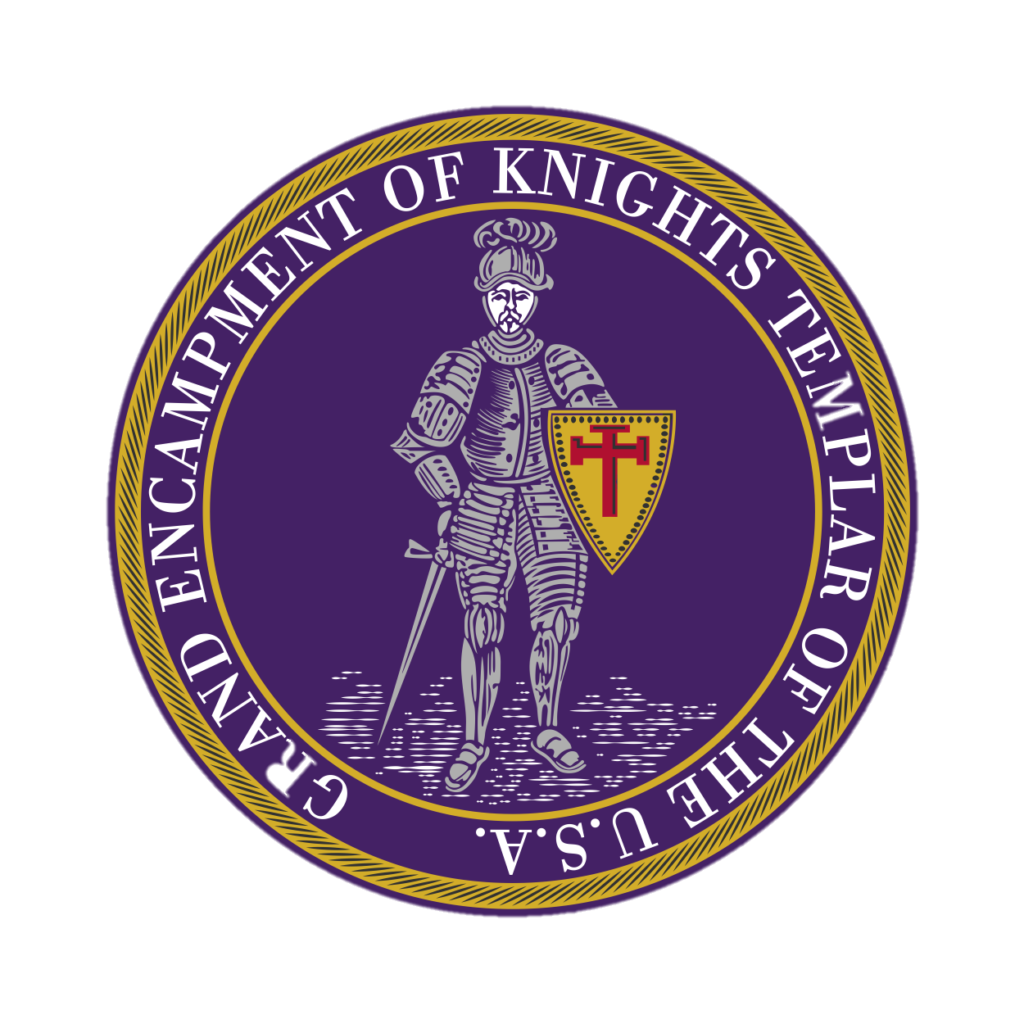James Madison Allen
3rd Most Eminent Grand Master
1835-1844
by George L. Marshall, Jr., PGC, KCT, ADC
James Madison Allen was elected to serve as most eminent grand master at the VI, VII, and VIII Triennial Conclaves of the Grand Encampment (1835-1841). Unfortunately, he has the dishonorable distinction of being the only grand master expelled from the order, as will be noted later in this article.
Allen was born in New Bedford, Massachusetts, on an unknown date. The first known record of his residence was at Amber, New York, where he served as a postmaster, merchant, and physician. He was listed as a member of Onondaga County Medical Society, but the records of the Old Geneva Medical College, the only medical school in central New York at the time, do not show him to be a graduate. It is more likely that he studied under a medical practitioner and did not hold a medical degree, which was not unusual at that early period.
Later, he is reported as living at Syracuse, Cayuga, and Skaneateles. After his difficulties with Masonic bodies, it is thought that he left New York about 1853, going to New Orleans where he died later in that decade. However, this is not confirmed. A careful search of online United States census and genealogical records failed to turn up definite or irrefutable information about his family or residences.
It is not known where he was made a Master Mason, but in 1826, he is listed as a member of Mount Moriah Lodge 245 located in Amber, New York. The same year in April, his name appears on a petition for a new lodge in the Village of Skaneateles, to be known as Village Lodge 456. It was consecrated on October 12, 1826, by Worshipful Brothers R.L. Smith and James M. Allen.
In the Proceedings of the Grand Chapter of Royal Arch Masons of New York, he is listed as the representative of Amber Chapter 69, located in Otisco, Onondaga County, during the years of 1824 to 1827. In 1828, a charter was granted for a new Chapter in Skaneateles to be known as Skaneateles Chapter 128, and Allen became its first high priest. He attended the Grand Chapter in 1829 and 1830 as representative of the new Chapter and in 1830 was elected deputy grand high priest. The next year he declined reelection to that office, but in 1832 he was chosen grand high priest and again in 1833. He attended each meeting of the Grand Chapter, but in 1844 was refused admission. A committee was appointed to investigate the charges preferred against him. This resulted in his connection to Capitular Masonry being severed in 1845.
In 1832 he attended the meeting of the General Grand Chapter held in Baltimore, Maryland, in his capacity as grand high priest of the Grand Chapter of New York. He acted as general grand scribe at the opening of the meeting. In 1838 and again in 1841, he attended General Grand Chapter as proxy for Joel R. Poinsett, the deputy grand high priest, who was unable to attend on account of illness. He served on several committees and in 1841 received $25.00 for his expenses in attending the meeting.
In 1824 he was listed as one of the officers of Delta Lodge of Perfection of the Scottish Rite in Plattsburgh, New York. It is not known where he received the degrees, but is thought that he received those from the Rose Croix to the Prince of Jerusalem at Albany, New York.
Allen’s connection with Templary is ambiguous. Since he was a close friend of Killian H. Van Rensselaer, who was created a Knight Templar by officers of the British Army stationed in Canada, it is possible that he may have obtained the orders in the same manner. However, it is possible that he may have been knighted in the early commanderies of that vicinity, namely Genesee Encampment 10 or Cherry Valley Encampment 9, both established in 1825, or in Jerusalem Encampment located in Ithaca. In the Grand Encampment of New York, he was regarded as a regular Knight Templar and was received as such. However, he is not listed as ever having served as an officer of the Grand Encampment of New York (At this period local and state bodies of Templars were known as “Encampments,” not “Commanderies”).
At the Triennial Conclave of the General Grand Encampment in 1832, Allen attended as proxy for Sir Cyrus Carter, the grand generalissimo of the Grand Encampment of New York. At that Conclave he was elected deputy general grand master and was listed as being from Skaneateles, New York. He was a member of the Committee of Memorials under Sir Knight Ezra S. Crozier, deputy general grand master (1829-1832).
He was not at the Triennial Conclave in 1835 but was elected general grand master, and the Encampment of New York was requested to install him in that office.
The VII Conclave assembled in Boston, Massachusetts, on September 12, 1838, Sir Knight James M. Allen, of New York, presiding as grand master, to which office he had been elected at the previous meeting in Washington, D.C. He was then listed as being from Syracuse, New York. Another state was added to the direct jurisdiction of the General Grand Encampment, the Encampment of Indivisible Friends of New Orleans, Louisiana, becoming directly subject to and a constituent of the General Grand Encampment. At this meeting, too, the regulation of Templary’s connection with Masonry was first directly broached, and all connection with a spurious Masonic Lodge, then existing in New York, was repudiated.
At the following Conclave, the VIII, held at New York on September 14, 1841, Allen was listed as being from Cayuga, New York. The first known written report of any of the order’s officers was here presented by the general grand captain general, Sir Knight William G. Reese of Ohio. He depicted in glowing terms the state and progress of Templary in what was then the great West, Ohio, and adjacent territory. Authority was thereupon given to the Encampments of Ohio to form a Grand Encampment (i. e., a Grand Commandery). At this Conclave, Most Eminent Sir Knight James M. Allen was again re-elected grand master.
The next meeting of the General Grand Encampment, Triennial Conclave IX, which took place at New Haven, Connecticut on September 10, 1844, was in many ways a memorable one. The chair was occupied by the deputy general grand master, Sir Knight Joseph K. Stapleton, of Maryland, the grand master, James M. Allen, being absent. The reason for this absence transpired when the records were inquired into and irregularities were found in Grand Master Allen’s conduct in matters connected with the order’s finances. His conduct brought about the following resolution:
“Resolved, that the conduct of Sir James M. Allen, late an officer of the Grand Encampment, in withholding funds which came into his hands in the discharge of the duties of his office, merits the censure of this General Grand Encampment; and that he be notified to pay over the amount in his hands before the next Triennial meeting, or appear at that time to show why he should not be expelled.”
It is a credit to the growing, youthful Grand Encampment, that such an inquiry was carefully made, that time and opportunity were given to the accused to defend himself, and that, when he did not avail himself of this opportunity, he was duly expelled at the following Triennial Conclave. This is the only case of the expulsion of a grand master or past grand master of the modern order on record. The deputy grand master presented a written report of his doings, and Sir Knight Reese, now general grand generalissimo, once more called attention to the great West, this time to the Mississippi Valley in particular and its opportunities as “a Masonic field of labor.” This Conclave is further made noteworthy by the fact that during its meeting, the old South Carolina Encampment 1 reappeared and enrolled itself in the regular ranks of organized American Templary, receiving a charter of recognition at the following Conclave.
There is no further record of Sir James Allen in the Proceedings. In later Proceedings of the Grand Encampment, the date of his death is indicated by dashes. A careful search has been made to find a portrait, engraving, or photo of Allen, but none has been found.
SOURCES
• Alumni Record and General Catalogue of Syracuse University, 1872-‘99, Including Genesee College 1852-’71,
and Geneva Medical College 1835-’72, Syracuse, NY, 1899 (online at Google Books)
• Redmond, Andrew J., Complete History of the Epoch Making XXXI Triennial Conclave of the Grand Encampment
Knights Templar of the United States, 1910 (available online)
• Sir Knight William L. Cummings, Syracuse, NY, “James Madison Allen, Grand Master 1835 – 1844, Cayuga, NY”
• Peacher, William G., “Craft Masonry n Onondaga County, New York, 1799-1826”,
online at: http://www.omdhs.syracusemasons.com/sites/default/files/history/80%20-%20Village%20Lodge%20-%20Apr%2007.pdf
Right Eminent Sir Knight Marshall, KYGCH(3), KCT, 33°, is a Past Grand Commander of the
Grand Commandery of Knights Templar of Alabama. He is a member of the Editorial Review
Board of the Knight Templar magazine and has published several articles in that magazine as
well as in the Royal Arch Mason magazine. He can be reached at geomarsh@yahoo.com.


